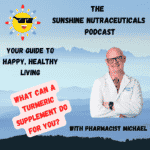
turmeric for pain
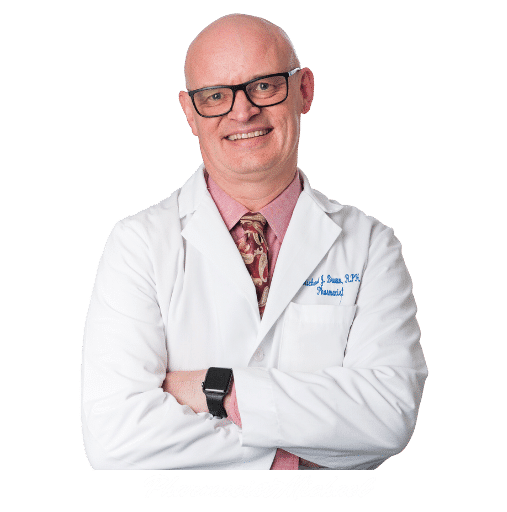


Do you suffer from trigeminal neuralgia (TN)?
Are you looking for a home remedy to help with the symptoms?
Trigeminal neuralgia is a chronic pain condition that affects the trigeminal nerves in the face. These nerves, also called the 5th cranial nerves, are composed of three branches. The three branches V1(ophthalmic), V2(maxillary), and V3(mandibular) are responsible for transmitting nerve impulses from the face to the brain. They also assist with motor functions such as chewing. Trigeminal neuralgia, also known as Fothergill’s disease, usually occurs in those fifty years of age and older and is more common in females.
Disclosure: This post may contain affiliate links, meaning, at no additional cost to you, I may earn a commission if you click on, or make a purchase through a third-party link.


We are not certain as to what causes trigeminal neuralgia. We think it is the result of trigeminal nerve compression. Blood vessels can press against the nerve and if the nerve is damaged, pain may occur. Other possible causes are:

Medications: Traditional painkillers such as acetaminophen and ibuprofen are generally ineffective against trigeminal neuralgia. Prescription medications are often utilized, specifically anticonvulsants. These include:
Carbamazepine (Tegretol)
Phenytoin (Dilantin)
Gabapentin (Neurontin)
Topiramate (Topamax)
Side Effects of Anticonvulsants: The main side effects of these types of medications are drowsiness, dizziness, nausea, and fatigue. Please consult your physician or pharmacist for more specific information.
Surgical Treatment: There are several surgical options available to treat trigeminal neuralgia.
Microvascular Decompression Surgery (MVD): This procedure works by inserting a cushion between the vessel and part of the trigeminal nerve. An incision is made behind the ear and a small portion of the skull is removed. This procedure helps approximately 80% of sufferers and is thought to be the longest-acting treatment. Risks of MVD include:
Rhizotomy: This is an outpatient procedure and is also effective in about 80% of patients. The patient is placed under general anesthesia and a hollow needle is placed through the cheek. The affected nerves are treated with heat (electrical current) or chemicals (glycerin or glycerol). This procedure takes about 30 minutes and pain relief is immediate.
Prevention: If you know things that cause trigeminal neuralgia flare-ups, avoid them. Examples include windy weather, spicy foods, and rubbing certain areas of the face. Keep a food diary to determine if particular foods can cause pain. Some common culprits are bananas, caffeine, and citrus fruits. Hot and cold liquids can also cause flare-ups. If this happens, using a straw might help.
Medical History and Neurological Exam: One of the best ways to help trigeminal neuralgia pain is to remove the underlying cause. To discover the source of the electric shock-like pain, a medical history should be obtained. Other disease processes such as diabetes can lead to nerve pain and make the symptoms of trigeminal neuralgia worse. A complete neurological exam can help to differentiate trigeminal neuralgia from other types of neuropathic pain conditions.
Electrical Stimulation: Transcutaneous Electrical Nerve Stimulation (TENS) and Transcranial Magnetic Stimulation (rTMS) are treatment options that use electrical current to block pain signals transmitted by damaged nerves. These options are non-invasive, well-tolerated, and can be a good option for trigeminal pain management.
Topical Pain Relievers: Topical agents have the advantage of working locally. This typically leads to fewer side effects. There are several creams, ointments, patches, and rubs that can be used to treat painful episodes. In the hospital where I practice, we use lidocaine ointment and patches, Diclofenac gel, and menthol creams for pain relief.
Nutritional Supplements: Several natural products can help relieve nerve pain. When selecting a pain management strategy, side effects are important. I believe natural supplements should be tried before prescription medications because the side effects of anticonvulsants are usually more severe and can negatively affect the quality of life.
Turmeric: Turmeric contains curcumin which has been shown to help with pain and inflammation. This includes nerve pain. Curcumin may promote the regeneration of nerves after nerve injuries. Curcumin has also been shown to inhibit nerve pain transmission.1
Another study showed that curcumin can promote nerve regeneration after nerve fibers are damaged.2

Trigeminal neuralgia is a painful condition that can interfere with daily activities and diminish the quality of life. The intense pain of trigeminal neuralgia can be treated with anticonvulsant medication, topical pain relievers, and turmeric. There are also outpatient and inpatient surgical procedures available. Electrical stimulation is a less intrusive option and may also be effective. Always remember to consider natural remedies such as acupuncture as well.
I believe it is always prudent to try natural remedies and nutritional supplements before prescription medications and surgical procedures whenever possible. The side effects of medications and the surgical risks can be extensive.
If you think you may be suffering from trigeminal neuralgia, it is a good idea to visit a neurologist. Review your treatment options and pick the one that best fits your situation. If you have any questions about this topic or any other health and wellness issue, please feel free to contact me using the author box below. I am always willing to help.
Thank you for reading this blog post and enjoy a happy, healthy life.

Michael J. Brown, RPh, BCPS, BCPP
Mr. Brown is a Clinical Pharmacist specializing in pharmacotherapy and psychiatry.
Feel free to send Michael a message using this link.
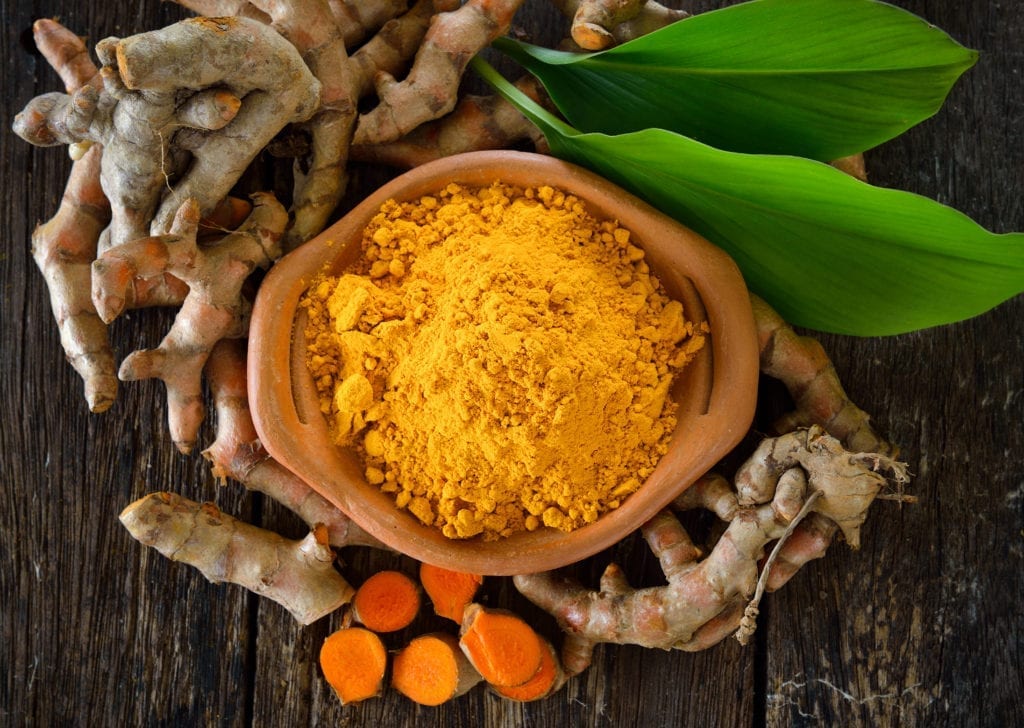

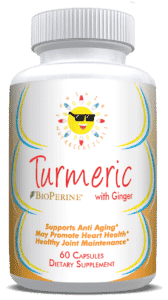
Should I take a turmeric supplement?
What is turmeric good for?
Is it safe?
What is Bioperine?
Turmeric is a spice many of us use in cooking. It is one of the main ingredients in curry powder. It has a yellow color and is also used as a coloring agent for foods and cosmetics. Turmeric is a plant related to ginger that is grown in Central America, Asia, and India. The rhizomes of this plant are dried and used as dietary supplements for a variety of health conditions.
This plant has been used in Indian and Asian medicine for thousands of years.
Turmeric may be the most effective nutritional supplement available today. The active component of this plant is curcumin. The polyphenol known as curcumin has been widely studied for many health-related benefits. Some of these include inflammation, arthritis, obesity, liver disease, and several types of cancer. It is thought that most of the positive benefits of curcumin are the result of its anti-inflammatory and antioxidant effects.
In this post, several health benefits of turmeric are explored. I have started taking this supplement as my father died from cancer and had two different types of cancer during his lifetime. I also have occasional back pain, which seems to respond to this supplement. Only you can determine if this supplement is for you.
Disclosure: This post may contain affiliate links, meaning, at no additional cost to you, I may earn a commission if you click on, or make a purchase through a third-party link.
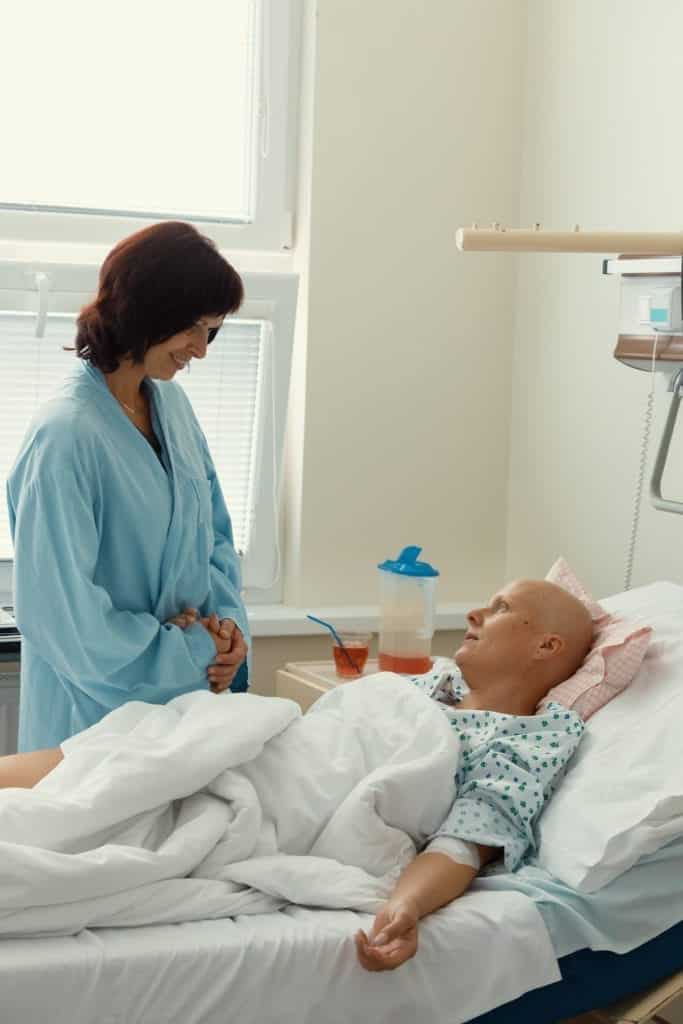
Probably the most exciting action of curcumin is its effects on various types of cancers. Cancer is the second leading cause of death worldwide. Although the therapy of cancer has progressed, mortality remains high. Many studies have been published on turmeric (curcumin) in the treatment of different types of cancer

Breast cancer is the leading cause of death among all cancers in women throughout the world.
The most effective treatment for breast cancer is early detection. Treatment is much more effective if the cancer is discovered in its early stages.
Traditionally, antiestrogen medications have been used for the treatment of breast cancer as more than seventy percent of these are of the estrogen receptor (ER) positive type. It is now known that combination treatment using various medications, surgery, and chemotherapy is the most effective treatment for this cancer type.
The effects of turmeric (curcumin) on breast cancer cells is complicated. Below are just some of the mechanisms thought to fight this deadly malady.
There is a proinflammatory transcription factor (NF-KB) that controls the genes that regulate proteins resulting in inflammation and the development of cancers.
Curcumin has been shown to decrease the effect of NF-KB, leading to its possible use in breast cancer.
Curcumin may also inhibit human epidermal growth factor receptor 2 (HER2-TK) alone or in combination with its analogs.
HER2-TK is a tyrosine kinase receptor. The overexpression of HER2-TK is associated with the progression of many cancer cell types.
Epidermal growth factor receptor (EGFR) is associated with the development of cancer cells.
Curcumin inhibits the growth and spread of breast cancer cells by decreasing EGFR signaling.
Curcumin can exert its positive anti-cancer effects on both estrogen-dependent as well as non-estrogen dependent breast cancer cells.

Prostate cancer is the second leading cause of death from cancer in men. 11
Curcumin has been shown to kill cancer cells and inhibit cancer cell proliferation both in the laboratory and in human subjects. 12
This is achieved by interfering with many cellular pathways including mitogen-activated protein kinase (MAPK), EGFR, and nuclear factor k (NFkB). 13 14
Curcumin has also been shown to activate protein kinase D1 (PKD1), which attenuates the oncogenic signaling by beta-catenin and MAPK.
This leads to the inhibition of prostate cancer. 15
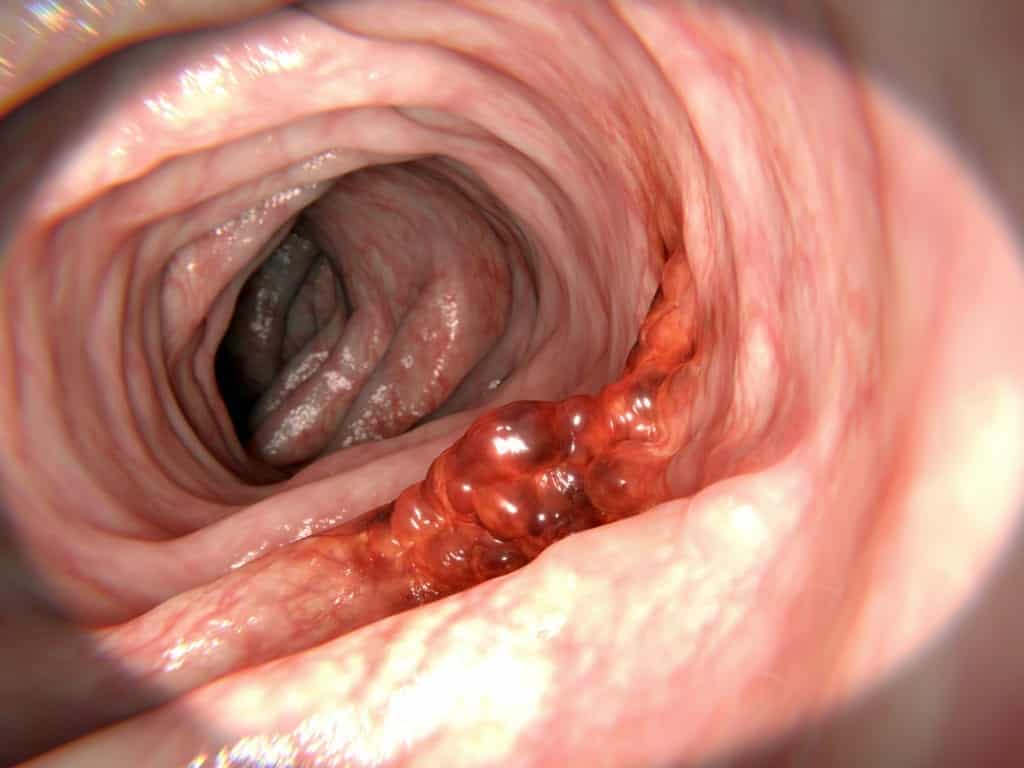
The third leading cause of cancer death in men is due to colorectal cancer. 16
This cancer is removed surgically, and often radiation therapy is prescribed, but over fifty percent relapse. 17
One of the markers for colorectal cancer is prostaglandin E2 (PGE2). PGE2 is a bioactive lipid that causes a wide variety of biological effects associated with inflammation and cancer.
A study was conducted on fifteen patients with treatment-resistant adenocarcinoma of the colon or rectum. Subjects received between 0.45 and 3.6 g oral curcumin daily for up to four months.
Intact curcumin and its metabolites were found in the plasma at a concentration of 10 nmol/L and also in the urine.
It was found that the 3.6 g curcumin daily dose led to 62% and 57% reductions in PGE2 levels one hour after administration on days 1 and 29.
This has led to a dosage recommendation of 3.6 g curcumin by mouth daily. 18

Alzheimer’s Disease (AD) is the most common cause of dementia. Currently, we only have medications available to slow the progression of this disease.
Can turmeric help to prevent AD?
We know that curcumin has many properties that may help prevent the development of Alzheimer’s disease. These include antioxidant, anti-inflammatory, anti-amyloid, and anti-tau actions that may be neuroprotective. 19 20
It is also known that populations that consume curry have a lower incidence of AD, and older people in this group have better cognitive function. 21
A study of 1010 sixty to ninety-year old’s who were occasional or frequent curry consumers found this population had significantly higher Mini-Mental State Examination (MMSE) scores compared to those who either didn’t eat curry or only consumed it rarely. 22
Animal studies have also shown that curcumin can improve tasks requiring memory and reverse stress-induced reductions in the production of neurons associated with the brain-derived neurotropic factor (BDNF). 23
An article was published in the American Journal of Geriatric Psychiatry in January of 2018, looking at the effects of curcumin on memory in people without dementia. This study, conducted at UCLA, also explored the effect of curcumin on the plaques and tangles in Alzheimer’s patients.
This was a double-blind, placebo-controlled study of forty adults between 50-90 years of age with mild memory complaints.
Study participants either received 90 mg curcumin or placebo twice daily for eighteen months. All were given cognitive assessments at the beginning of the study and every six months.
Curcumin blood levels were obtained at the beginning and end of the study.
Subjects who received curcumin realized a significant improvement in memory and attention.
The placebo group did not show significant improvement in either.
The curcumin group improved their memory scores by 28% over the 18-month period. This group also showed less amyloid and tau plaques in the hypothalamus and amygdala regions of the brain than the placebo group.
This research group is planning a follow-up study with a higher number of subjects. Antidepressant effects of curcumin will also be explored in their future study.

There have been several studies evaluating the use of curcumin in the treatment of diabetes.
A 36-week study followed 240 pre-diabetic patients in 2012. The subjects were split into two groups. One group received 1500 mg curcumin daily while the other group received a placebo. At the end of the study, 16.4% of the placebo group developed T2DM, while no patients in the curcumin group developed diabetes. 24
A study published in 2008 compared curcumin to atorvastatin (Lipitor) in T2DM patients. In this trial, patients received either 300 mg curcumin supplements daily, 10 mg atorvastatin daily, or a daily placebo.
The curcumin and atorvastatin group showed significant improvement in endothelial function and also a significant decrease in IL-6, TNF-alpha, ET-1, and malondialdehyde.
These results suggest curcumin has a positive effect on reducing inflammation and oxidative stress similar to that of the prescription medication atorvastatin. 25

The number one cause of death worldwide is heart disease, according to the World Health Organization. There are several risk factors that increase the chances of having a heart attack. Some are modifiable, while others are not. Some of the most prominent risk factors, according to the CDC are:
A study utilizing rats conducted in 2012, found curcumin improved cardiac repair and function after reversible cardiac ischemia. Left ventricle dilation was reduced, and wall thickness increased. This led to the conclusion that curcumin may be useful in the treatment of heart failure caused by ischemia. 27
In 2014, a study performed by Cheungsarman et al. found curcumin showed an improvement in inflammatory and metabolic profiles as well as a significant positive impact on an atherosclerosis marker. 28
Curcumin has been shown to improve disrupted cardiac function caused by cardiac fibrosis using various molecular mechanisms. 29

Osteoarthritis is the most common form of arthritis. This condition affects millions of people worldwide. The joints most affected are in the spine, hips, knees, and hands. Pain and swelling are caused when the cartilage in the joints that cushions the ends of the bones wear out.
The best initial treatment for osteoarthritis is exercise. Medications such as NSAIDs can also be utilized, but they cause some significant side effects, especially if used long-term.
Since it is known that curcumin has anti-inflammatory properties, its use in this disease process has been studied.
A review article published in May of 2019 evaluated curcumin in the treatment of autoimmune and rheumatic diseases.
Of the sixteen articles reviewed on osteoarthritis treatment with curcumin, fourteen reported significant improvements in several disease patterns. All studies were randomized, placebo-controlled trials. 30
Curcumin utilized in these studies was most commonly isolated from turmeric rhizomes. The average curcumin dosage reported in the clinically effective studies was 834.29 mg daily.
Clinical outcomes were measured in most of these studies using:
In thirteen of these studies, dietary intake of curcumin resulted in improvement of at least two clinical measures, 31 32 33 34 35 36 37 38 39 40 41 42 43
While seven studies showed improvement in at least three. 44 45 46 47 48 49 50
The two clinical outcomes which increased most commonly were walking distance and decreased WOMAC scores.
There have also been studies conducted comparing the effectiveness of curcumin versus NSAIDs in the treatment of osteoarthritis.
A study in 2014 compared curcumin to ibuprofen. A total of 367 patients with arthritis of the knee were divided into two groups.
The Ibuprofen group received 1200mg Ibuprofen daily, while 1500mg curcumin daily was administered to the other group. Treatment lasted four weeks. Both groups showed significant improvement in WOMAC pain and function scores, and the ibuprofen group had more complaints of abdominal pain. 51
A similar study was conducted in 2009. Patients received either 800mg ibuprofen daily or 2 grams curcumin extract daily for six weeks. No difference in adverse effects between the two groups was found, and there were no differences in outcomes except for pain on stairs. 52

Ulcerative colitis (UC) is an inflammatory bowel disease that causes the formation of ulcers and inflammation in the digestive tract. This disease affects the inner lining of the colon and rectum. Since we know curcumin is useful in the treatment of inflammation, it is expected that this substance would have a positive impact on UC.
The symptoms of UC are diarrhea, abdominal pain, fever, weight loss, fatigue, and rectal pain and bleeding.
If the bleeding becomes severe, this disease can lead to death.
There have been positive and negative studies regarding the use of curcumin in the treatment of UC.
A study in 2017 by Kedia et al. found no difference in patients receiving 450 mg daily of curcumin and placebo in inducing remission in patients with mild to moderate UC.
This study spanned eight weeks and found no benefit of curcumin for clinical remission rates, clinical response, or mucosal healing when compared to placebo. It should be noted that the dosage of curcumin was low in this study. 53
By contrast, a 2015 study by Lang et al. found that UC patients who received 3000 mg curcumin daily for one month, along with mesalamine, saw significant improvement in clinical response, endoscopic remission, and rate of clinical remission as compared to a mesalamine-placebo group. 54
Another randomized, double-blind study of eighty-nine patients with UC was conducted in 2006. Forty-five subjects received curcumin 1000 mg twice daily, plus sulfasalazine (SZ) or mesalamine. The placebo group consisted of forty-four patients who received a placebo plus SZ or mesalamine.
The results showed only 4.65% of the curcumin group relapsed, whereas 20.51% of the placebo group relapsed during the study.
A six-month follow-up was performed on both groups who were taking either SZ or mesalamine. Eight addition patients in the curcumin group and six patients in the placebo group relapsed. 55


Turmeric is generally well tolerated. I have been taking my Turmeric with Bioperine supplement daily for about one month with no noticeable adverse effects. The side effects reported in several clinical trials were mild. Below is a list in decreasing frequency of side effects that may result:
These effects were not statistically different than those of the placebo groups. 58
The drug interactions to be aware of all regard the risk of bleeding. Caution should be exercised when using tumeric with the following drug classes:
The substance known as piperine is a major component of black pepper. Piperine is marketed under the trade name Bioperine and is added to some turmeric supplements to increase the bioavailability of curcumin. This substance has been shown to increase bioavailability by 2000%. 60

I am very excited about the information I have learned while researching turmeric. It can be consumed in foods and has been used as a medicine in different parts of the world for centuries.
I have been taking this supplement for about a month with absolutely no side effects.
Our family has also been eating curry several times per week. This is an easy way to decrease the odds of contracting cancer or dementia. Working on a unit with dementia patients has taught me I don’t want to burden my family with this disease.
The curcumin in turmeric also helps reduce inflammation, which helps with my back pain.
I firmly believe this is the most versatile supplement available in my store.
I hope you have enjoyed reading this post. Remember to eat a healthy diet, exercise, get plenty of sleep, and spend as much time with your happiness elements as possible.
Please send me a message if you have any topics you would like for me to cover in my blog.

Michael J. Brown, RPh, BCPS, BCPP
Mr. Brown is a Clinical Pharmacist specializing in pharmacotherapy and psychiatry.
Feel free to send Michael a message using this link.